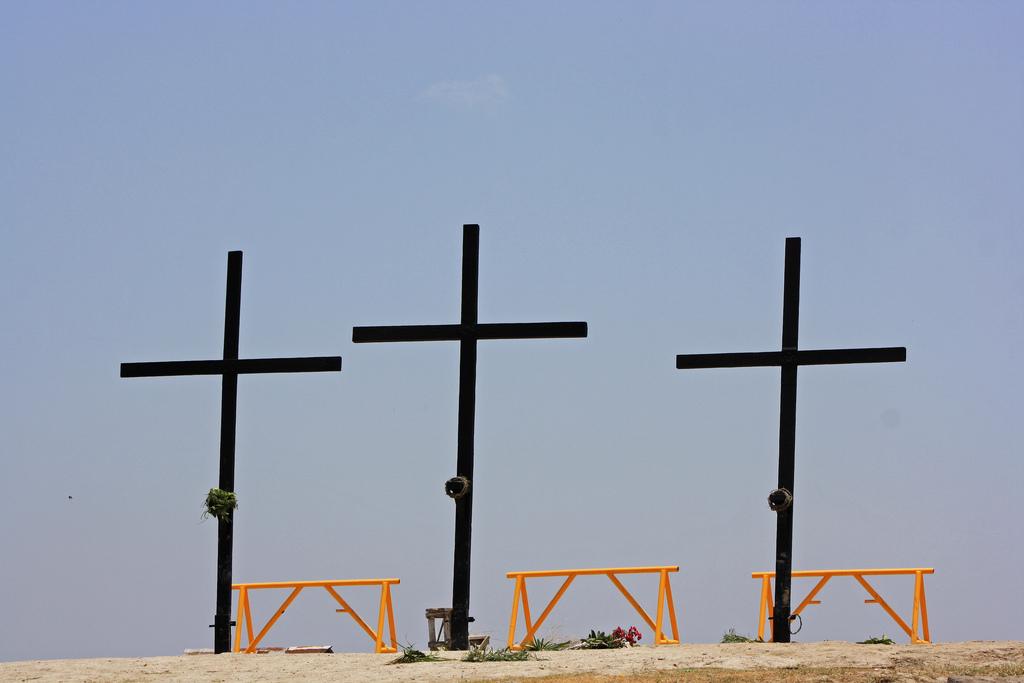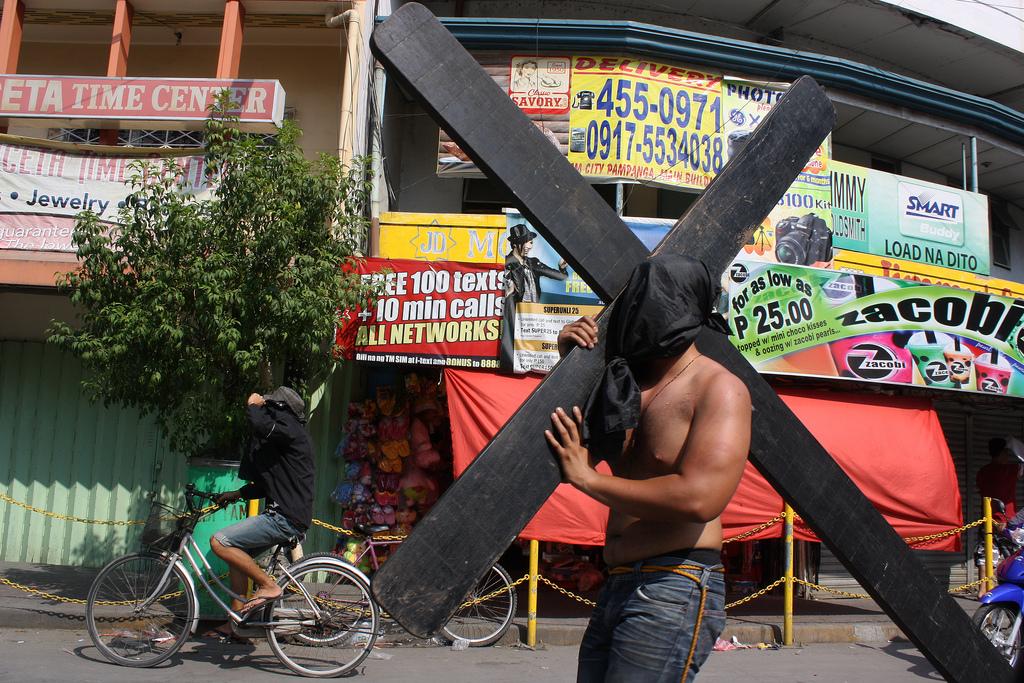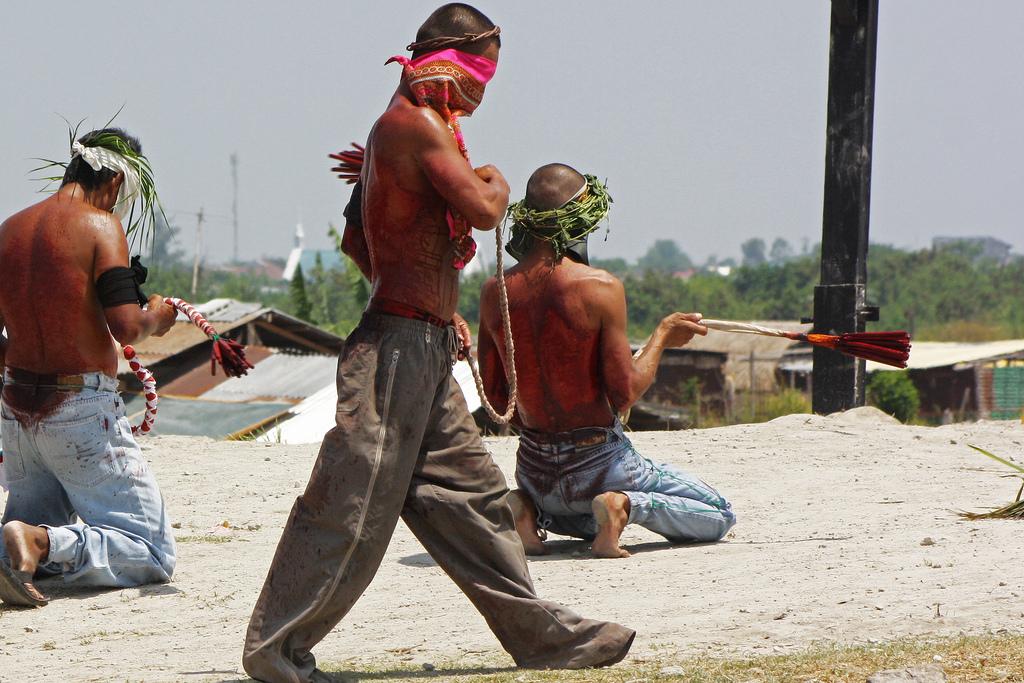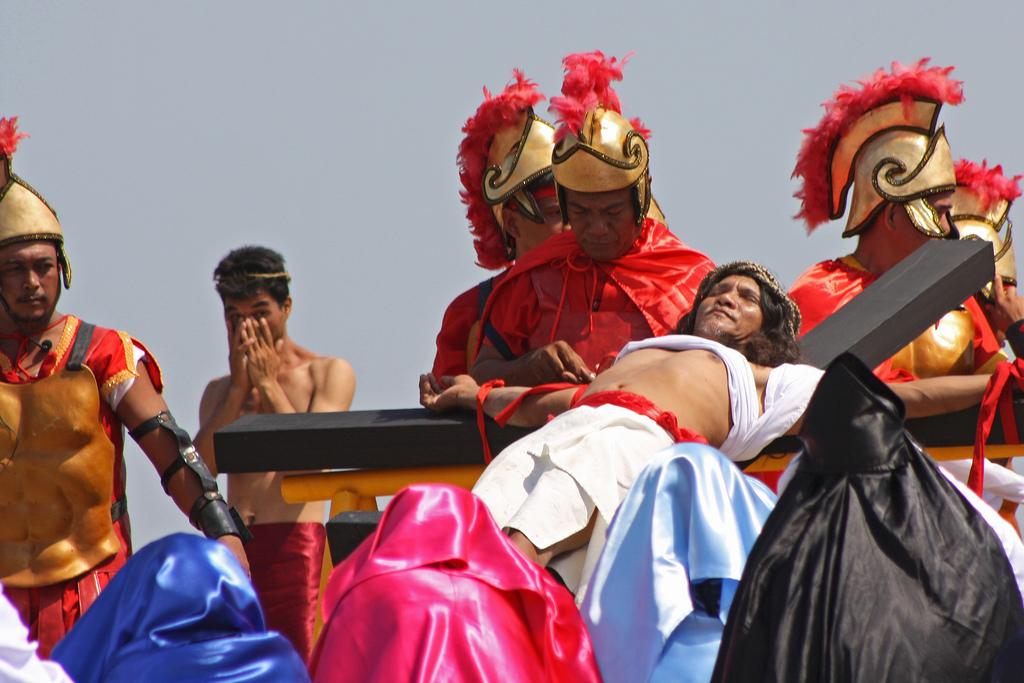
In the predominantly Catholic Philippines, Maundy Thursday and Good Friday are national holidays; work is suspended in government offices and private businesses. Most stores are closed and most people in the cities head to the provinces for the long Easter weekend.
Holy Week is commemorated with street processions, the Way of the Cross, and a Passion play called the Sinakulo. The Church keeps the day solemn by not tolling the church bells, and no mass will be celebrated. In some communities (most famously in San Fernando, Pampanga), the processions include devotees who self-flagellate and sometimes even have themselves nailed to crosses as expressions of penance. After three o'clock in the afternoon of Good Friday (the time at which Jesus is traditionally believed to have died), noise is discouraged, some radio stations and television stations sign off (while others remain signed-on, broadcasting Religious Programming), businesses automatically close, and the faithful are urged to keep a solemn and prayerful disposition through to Easter Sunday.
At Mass on Palm Sunday, Catholics carry "palaspas" or palm leaves to be blessed by the priest. Many Filipinos bring home the palm leaves after the Mass and place these above their front doors or their windows, believing that doing so can ward off evil spirits. Holy Monday marks the beginning of the Pabasa (literally, reading) or Pasyon, the marathon chanting of the story of Jesus' life, passion, and death, which continues day and night, for as long as two straight days. A popular Holy Thursday tradition is the Bisita Iglesia (Church Visit), which involves visiting several Churches at which the faithful would pray the Stations of the Cross. The last Mass before Easter is also celebrated on Holy Thursday, usually including a reenactment of the Washing of the Feet of the Apostles; this Mass is followed by the procession of the Blessed Sacrament before it is taken to the Altar of Repose. Good Friday in the Philippines is commemorated with street processions, the Way of the Cross, the commemoration of Jesus' Seven last words (Siete Palabras) and a Passion play called the Sinakulo.
Easter morning is marked with joyous celebration, the first being the dawn Salubong, wherein large statues of Jesus and Mary are brought in procession together to meet, imagining the first reunion of Jesus and his mother Mary after Jesus' Resurrection. This is followed by the joyous Easter Mass.
Gallery:














